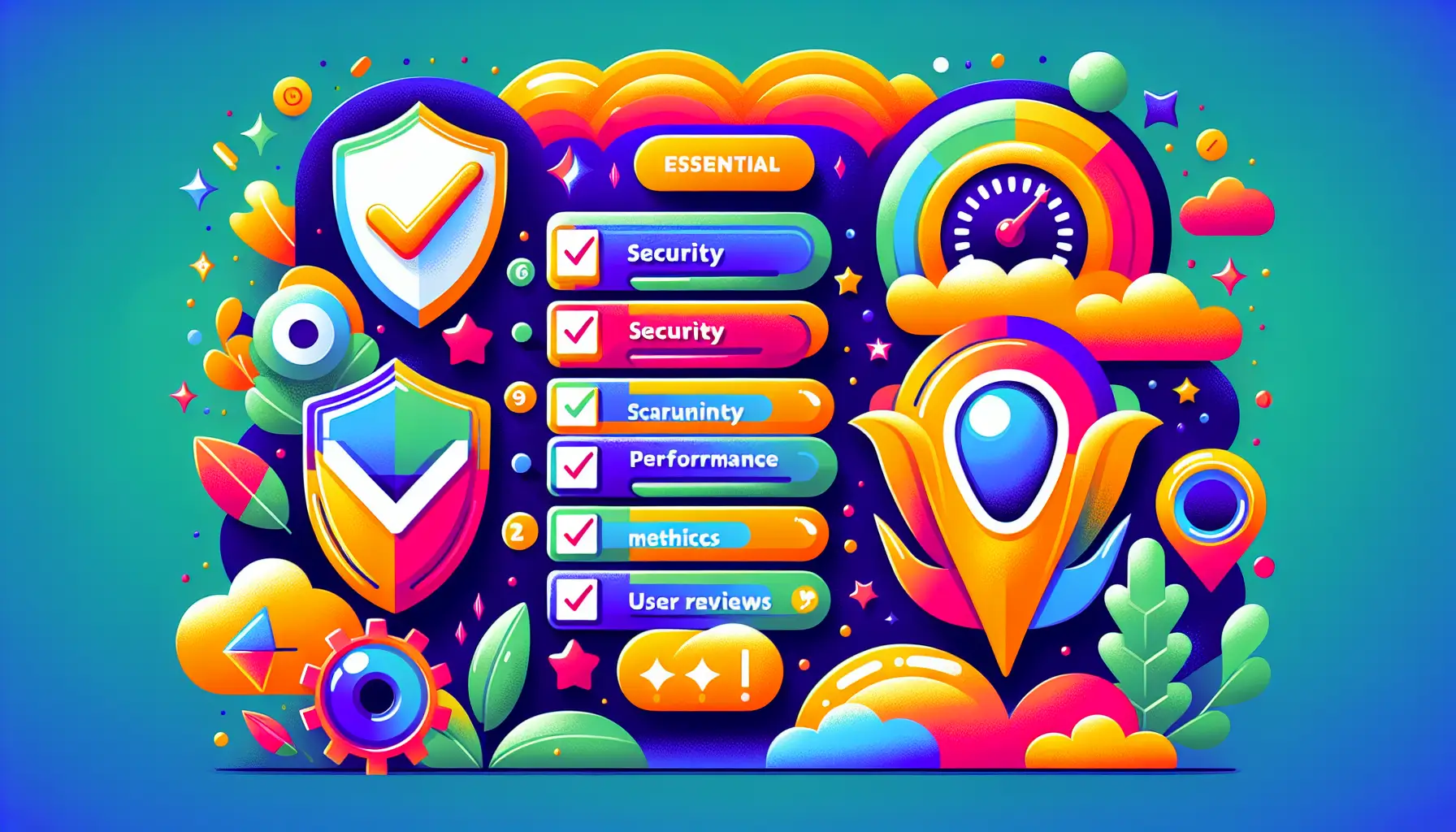Are AI trading bots legit? This article explores their credibility and effectiveness. We break down how these bots work, their success rates, and what to watch out for to help you decide if they are right for you.
Key Takeaways
- AI trading bots use advanced algorithms to automate trading, enhancing efficiency and reducing emotional biases.
- Their legitimacy depends on transparency, user feedback, and adherence to regulatory guidelines, with mixed success rates reported by users.
- While promising, AI trading bots are not without risks and limitations, such as market volatility and potential scams, necessitating careful selection and responsible usage.
| Parameter | Details | Rating |
|---|---|---|
| Market Credibility | Established firms like Binance, Coinbase, and eToro have integrated AI bots into their trading platforms. However, many independent bots lack regulation and oversight. | ⭐⭐⭐⭐ |
| Performance Consistency | AI bots perform well during stable market conditions but struggle in highly volatile markets. Strategies like arbitrage and trend-following work well, but flash crashes pose risks. | ⭐⭐⭐ |
| Ease of Use | Most bots offer user-friendly interfaces and customizable strategies suitable for beginners. Advanced features, such as algorithm customization, cater to experienced traders. | ⭐⭐⭐⭐ |
| Security & Privacy | Reputable platforms use encryption and API key management to ensure user security. Scams and phishing attacks remain prevalent in less-known platforms. | ⭐⭐⭐ |
| Transparency | Transparency varies; some bots offer detailed performance metrics and backtesting results, while others are opaque about their algorithms and fees. | ⭐⭐⭐ |
| User Support & Community | Platforms with large user communities provide robust support and educational resources. Smaller platforms often have limited customer service and community engagement. | ⭐⭐⭐⭐ |
| Cost & Accessibility | Subscription fees range from $10 to $100 per month. Some bots offer free trials, but hidden fees and performance-based charges can add up. | ⭐⭐⭐ |
| Regulatory Compliance | Regulated platforms adhere to KYC/AML guidelines, but most bots operate in a gray area, especially in crypto trading. Lack of regulation poses risks for users. | ⭐⭐ |
| Scalability & Adaptability | AI bots can manage multiple trades simultaneously and adapt to different market conditions. The API rate limits of exchanges often limit scalability. | ⭐⭐⭐⭐⭐ |
| Overall Legitimacy | While many AI trading bots are legitimate and effective, due diligence is required to avoid scams and ensure alignment with trading goals. | ⭐⭐⭐ |
Summary of Findings
- Market Credibility: Reputable platforms enhance credibility, but independent bots require scrutiny.
- Performance Consistency: Effective in stable markets; volatility and market anomalies pose risks.
- Ease of Use & Accessibility: Generally user-friendly, but costs vary significantly.
- Security & Transparency: Reputable bots focus on security, yet transparency varies widely.
- Regulatory Compliance: Lack of comprehensive regulation is a major concern.
Understanding AI Trading Bots

AI trading bots are revolutionizing the way we approach trading in financial markets. These automated systems leverage sophisticated algorithms to execute trading strategies without human intervention, aiming to streamline processes and boost profitability. Imagine having a tireless assistant who can make rapid, calculated decisions based on real-time data—this is what AI trading bots represent.
The beauty of AI stock trading bots lies in their ability to operate across various assets, from crypto and stocks to forex trading, adapting strategies as market conditions change. This adaptability, combined with the speed and efficiency of execution, makes the AI stock trading bot a powerful tool for novice and professional traders.
But what exactly are these bots, and how do they work?
What Are AI Trading Bots?
At their core, AI trading bots, also known as algorithmic trading or robot trading, are automated trading algorithms designed to execute trades in a user’s trading account. They conduct complex market analyses, helping traders make timely and informed decisions without constant monitoring.
These bots are versatile, operating across various assets, including cryptocurrencies, stocks, and forex, and can adjust their strategies based on market conditions, providing a dynamic approach to algorithmic trading.
The primary function of AI-powered trading bots is to automate trading in financial markets, improving execution speed and efficiency. Advanced trading tools and techniques enable them to identify opportunities that human traders might overlook. This automation saves time and eliminates the emotional biases often cloud human judgment.
How AI Trading Bots Work
AI trading bots employ predictive analytics to anticipate market trends by analyzing historical data patterns. Through machine learning, these bots continuously refine their decision-making algorithms as they process new information, becoming more accurate and effective. This ability to learn and adapt sets AI trading bots apart from traditional automated systems.
These bots interpret predefined rules that dictate trade entry and exit conditions, ensuring that decisions are made based on logical criteria rather than emotional impulses. Perceptrader AI, for example, has AI bots on multiple exchanges that employ AI and machine learning algorithms to accurately identify optimal entry and exit points and execute trades, enhancing trading performance.
With the integration of emerging technologies like natural language processing, the functionality of AI trading bots is set to reach new heights.
Legitimacy of AI Trading Bots

The legitimacy of AI trading bots is a topic of much debate. These bots are gaining credibility in the financial market due to their efficiency and data-driven approach. However, their transparency and accountability in executing trades are crucial factors that determine their legitimacy.
User reviews indicate that AI trading bots represent a mixed success rate, with some users reporting significant gains while others have faced losses. This variability underscores the importance of thorough research and cautious optimism when using AI trading bots.
Adherence to regulatory guidelines is essential for the legitimacy of these bots, as it protects users from potential fraud and ensures fair trading practices. Understanding the regulatory landscape, evaluating success rates, and considering user testimonials can provide a comprehensive view of the legitimacy and reliability of AI trading bots.
Regulatory Landscape
AI trading bots face significant challenges in the form of regulatory scrutiny, which may impose stricter compliance requirements and impact their operational flexibility. Despite these challenges, a well-defined regulatory framework can enhance user trust in AI trading bots, potentially leading to increased adoption. Regulatory compliance remains a hurdle for the widespread adoption of these bots in various markets.
While navigating these regulatory hurdles to identify the best AI trading bot and opportunities presents challenges, it also offers opportunities for innovation in compliance solutions. As technological improvements continue, the growth and adoption of AI trading bots will be heavily influenced by shifts in the regulatory environment. Ensuring AI trading bots adhere to these regulations is crucial to their legitimacy and long-term success.
Success Rates and Performance
Success rates and performance metrics are critical when evaluating AI stock trading bots. For instance, StockHero’s Market Neutral Bot reports a success rate of 90%, with 9 out of 10 trades being profitable. Similarly, Learn2Trade boasts a win rate of 79%, showcasing the potential for success with reputable stock trading bots. These examples highlight how effective AI stock trading bots can be when designed and used correctly.
However, it’s important to note that AI trading bots are not foolproof. They can falter in unpredictable or volatile market conditions, and their success heavily depends on the strategies employed and their adaptation to market changes. Staying updated with the latest market trends and continuously learning are essential for maximizing the effectiveness of these bots.
User Reviews and Testimonials
User reviews and testimonials play a significant role in assessing the reliability and effectiveness of AI crypto trading bots. Positive reviews from users can indicate the reliability of a crypto trading bot and its ability to deliver on its promises. For instance, many traders have shared their success stories using reputable AI crypto trading bots here, demonstrating the potential advantages of these tools.
However, it’s equally important to consider the varied experiences of users, as some have faced losses or encountered issues with certain built-in trading bots. This mixed feedback underscores the importance of conducting thorough research and due diligence before committing to an AI trading bot.
Evaluating user reviews and community feedback can greatly influence the selection of a reliable AI trading bot.
Common Concerns and Risks

As with any technology, AI trading bots have their fair share of concerns and risks. While effective in many scenarios, these bots are not without their pitfalls. Understanding these risks is crucial for anyone considering using AI trading bots. From identifying potential scams to addressing security and privacy issues, traders must be vigilant and well-informed.
Market volatility and the limitations of AI trading bots also pose significant challenges. These bots can struggle during sudden market shifts, affecting their performance and reliability. Awareness of these risks and implementing effective risk management strategies can help traders minimize losses and maximize the benefits of AI trading bots.
Identifying Trading Bot Scams
Scams are a major concern in the world of AI trading bots. Many fraudulent services lure unsuspecting traders with false claims of guaranteed high returns, often using AI trading algorithms as bait. It’s crucial to avoid ‘get rich quick’ schemes and be wary of automated trading bots and services that promise unrealistic gains.
Protecting oneself from trading bot scammers requires thorough research. Checking the platform’s reputation and reading reviews from other users can help identify legitimate services. Being cautious and skeptical of overly ambitious claims can save traders from falling victim to trading bot scams.
Security and Privacy Issues
Security and privacy are paramount when using AI trading bots. While these bots can be generally safe to use, there are risks if they are not used properly. Trustworthy AI trading platforms and bots should implement robust security measures, such as two-factor authentication and encryption, to protect user data and prevent unauthorized access.
Users should also be mindful of the data they share with the trading platform. Ensuring the trading platform has a solid privacy policy and understanding how your data will be used can help mitigate potential security and privacy risks. These precautions help traders safeguard their investments and personal information.
Market Volatility and Limitations
Market volatility is a significant challenge for AI trading bots. These bots rely heavily on historical data to make predictions about market making, which can be misleading in highly volatile markets. Sudden market changes can significantly impact AI stock trading bot strategies and outcomes, highlighting the limitations of AI trading bots in such conditions.
Despite their advanced trading techniques and algorithms, AI trading bots are not infallible. Traders must be aware of these limitations and be prepared to intervene when necessary. Continuous monitoring of market trends and adjusting strategies accordingly enable traders to navigate financial market complexities and enhance the performance of their AI trading bots.
Choosing a Legitimate AI Trading Bot

Given the many other advanced trading tools and available options, selecting the right AI trading bot can be daunting. Investors should first understand the trading strategies employed by these bots and evaluate their performance to ensure they align with their trading goals. AI enables complex and potentially more profitable trading strategies by evaluating and adapting real-time trading signals.
Key factors include customization options, backtesting capabilities, and robust user support. These features can significantly enhance the user experience and the bot’s effectiveness. By carefully assessing these aspects, traders can choose a bot that best fits their needs and risk tolerance.
Key Features to Look For
Customization options are crucial when selecting an AI trading bot. They allow traders to tailor the best AI trading bots to represent the bot’s operations to their specific strategies and preferences. Backtesting features are equally important, enabling users to test their grid’s best ai trading bot strategies against historical data before live deployment.
Additionally, a user-friendly interface and reliable customer support are essential, especially for novice traders needing extra guidance. These features ensure that traders can navigate the trading environment smoothly and efficiently.
Evaluating Trading Strategies
Evaluating the trading strategies of AI trading bots is critical for effective use. These bots can learn from historical and real-time market data and adapt their approach to changing market conditions. Common methods include grid trading, arbitrage, and dollar-cost averaging, each with advantages and risks.
As AI trading bots evolve with improved algorithms and artificial intelligence, their predictive accuracy and decision-making capabilities for trading strategy are expected to be enhanced. Traders should carefully evaluate these strategies to ensure they align with their trading goals and market conditions.
Comparing Popular AI Trading Bots
Comparing popular AI trading bots can help traders make informed decisions. For instance, Octobot’s Pro Plan AI bots cost $24.99 monthly, while Mizar does not charge any subscription fee for AI bots. Pionex offers trading bots at no extra cost, charging only trading fees.
Platforms like Dash2Trade are recognized as the overall best AI trading crypto bot and platform in 2024. Cryptohero, a great option for automated crypto trading bots, provides a bot that supports varied features and pricing to suit different trader levels. Comparing these options helps traders select the AI crypto trading platform and bots that best suit their needs and budget.
Using AI Trading Bots Responsibly
Using AI trading bots responsibly is key to maximizing their benefits while minimizing risks. Identifying your investment goals and risk tolerance is crucial when selecting an AI trading bot. One should never invest more than they are willing to lose, a principle that helps manage expectations and reduce financial stress.
Effective risk management involves monitoring performance, understanding limitations, and continually learning and adapting. Employing these practices enhances trading success and safeguards investments.
Monitoring and Adjusting Performance
Regularly monitoring the performance of AI trading bots is vital to ensure they operate correctly and adapt to changing market conditions. Since previous market conditions may differ from live conditions, ongoing monitoring is essential to make necessary adjustments.
Monitoring performance metrics and adjusting strategies as needed enhances trading outcomes and maintains the effectiveness of AI trading bots.
Risk Management Techniques
Effective risk management is crucial when using AI trading bots. Diversifying investment portfolios can help minimize potential losses. Backtesting is another valuable technique, allowing traders to assess a bot’s historical performance before committing real funds.
Setting stop-loss limits is also essential, as it helps traders automatically exit a trade when losses reach a predetermined level, thereby minimizing potential financial damage. By employing these risk management strategies, traders can better protect their investments.
Continuous Learning and Adaptation
To stay relevant in dynamic financial markets, continuous learning and adaptation are essential for AI trading bots. Analyzing market news, technical indicators, and social media sentiment allows these bots to make informed trading decisions that reflect current market conditions.
Experienced traders’ ability to continuously learn and adapt enhances trading outcomes and improves the effectiveness of AI trading bots. Experienced traders must commit to ongoing education and adaptation as AI technology evolves to maintain a competitive edge.
Future of AI Trading Bots

The future of AI trading bots is promising, with technological advancements expected to enhance their accuracy and efficiency. Future bots trading stocks will likely incorporate sophisticated machine learning algorithms, allowing for better forecasting of stock market move trends.
Integrating AI trading bots with other technologies, such as blockchain and the Internet of Things (IoT), could optimize their functionality and security. While these advancements present numerous opportunities, they also come with challenges like regulatory compliance and market volatility.
Technological Advancements
Next-generation AI trading bots are expected to incorporate advanced predictive modeling, enhancing trading accuracy and decision-making processes. Integrating deep learning techniques with grid trading bots will improve their predictive capabilities, making them more effective trading tools.
With the continuous improvement of machine learning capabilities, future AI trading bots can analyze and learn from trading data, adapting trading strategies to market conditions more efficiently. These technological advancements promise to revolutionize the landscape of automated trading in futures markets.
Integration with Other Technologies
AI trading bots are poised to leverage blockchain technology for more secure and transparent crypto trading transactions. Improvements in blockchain interoperability will enable these cryptocurrency trading bots to function across various blockchain platforms, enhancing their trading strategies.
Integrating a cloud-based trading strategy and bot with IoT could also play a significant role, feeding real-time data to AI trading bots and optimizing their decision-making based on comprehensive datasets. Integrating a trading strategy with emerging technologies will make AI trading bots more robust and adaptive.
Potential Challenges and Opportunities
The rise of AI trading bots presents numerous opportunities, including reducing manual trading errors and increasing efficiency in trading strategies. However, these advancements also come with challenges, such as the need for regulatory compliance and adapting trading style to market conditions.
As the adoption of AI trading bots by major exchanges increases, the competitive landscape of paper trading will push traders to seek innovative trading strategies and technologies for an edge.
Future developments in AI trading bots could influence market dynamics and create new trading methodologies, altering the landscape of paper trading for institutional and retail traders.
Summary
In summary, AI trading bots represent a significant advancement in the trading world, offering speed, efficiency, and the potential for substantial returns. However, their effectiveness depends heavily on the strategies employed, continuous monitoring, and adaptation to market conditions. Regulatory compliance and understanding user reviews are crucial in selecting a legitimate and popular AI trading bot.,.
AI trading bots will likely become even more sophisticated as technology evolves, integrating with other technologies such as blockchain and IoT. By using these bots responsibly and staying informed, traders can harness their full potential and navigate the complexities of the financial markets more confidently.
Frequently Asked Questions
Are AI trading bots legal?
Yes, AI trading bots are legal in the US and most countries so that you can automate your trading activities without legal concerns.
How do AI trading bots work?
AI trading bots leverage predictive analytics and machine learning to assess stock market move trends and make trades according to set rules. They automate the stock trading call process, aiming to maximize profits while minimizing risks.
What are the risks associated with AI trading bots?
AI trading bots can be risky due to potential scams, security and privacy concerns, and their sensitivity to market volatility. It’s crucial to stay vigilant and do your own research before using them.
How can I choose a legitimate AI trading bot?
To choose a legitimate AI crypto trading bot, focus on key features like customization options, backtesting capabilities, and strong user support. It’s also smart to evaluate different crypto trading bot strategies and compare popular bots to find one that suits you and the crypto market best.
What is the future of AI trading bots?
The future of AI trading bots looks promising as they will likely use advanced machine learning algorithms and integrate with technologies like blockchain and IoT for improved capabilities and security. This evolution will enhance their effectiveness in the trading landscape.







